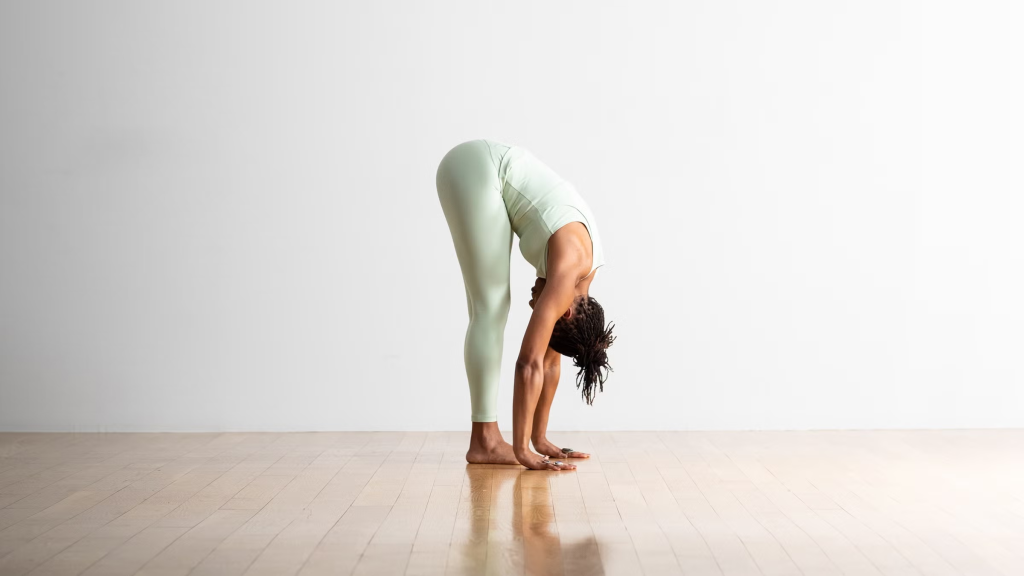Is Your Mind Always Racing? This 5-Minute Fix Might Surprise You
Do you ever feel like your brain is a browser with 37 tabs open—most of them frozen? Overthinking is more than just a mental habit; it can manifest physically, leading to fatigue, tension, poor sleep, and even digestive issues. But what if the solution didn’t involve a therapist’s couch or a self-help book—but your own body?
Research shows that even a short burst of daily physical activity can interrupt the cycle of chronic overthinking, calm the nervous system, and sharpen mental clarity. This article isn’t about burning calories. It’s about gaining control—over your thoughts.
Here’s a carefully crafted 5-minute exercise routine designed specifically for overthinkers. No gym. No gear. No excuses.

Expected Benefits After 30 Days
| Category | Changes You May Notice |
|---|---|
| Mental Clarity | – Sharper focus – Reduced brain fog – Faster decision-making |
| Emotional Stability | – Lower stress response – Improved mood – Fewer overthinking spirals |
| Sleep Quality | – Quicker sleep onset – Deeper, more restful sleep – Fewer racing thoughts at night |
| Mind-Body Awareness | – Increased mindfulness – Better emotional regulation – Stronger body connection |
| Physical Benefits | – Looser shoulders/neck – Improved posture – Enhanced energy levels |
| Productivity | – Better task completion – Less procrastination – Smoother daily routines |
Why Overthinkers Need a Different Kind of Workout
While most workouts focus on physical endurance, strength, or flexibility, overthinkers benefit most from a movement that shifts focus away from the mind and into the body.
Did you know?
Overthinking has been shown to increase levels of cortisol (the stress hormone), which in turn reduces your body’s ability to regulate emotions. By engaging in short, mindful exercises, you can lower cortisol and activate the parasympathetic nervous system—aka your “rest and digest” mode.
The 5-Minute Daily Exercise Routine
This routine is simple but highly effective. Each movement is chosen not just for physical benefit, but for its ability to ground your awareness in the present moment.
- Total Time: 5 minutes
- Do each move for 1 minute.
1. 60 Seconds – Box Breathing with Shoulder Rolls

Calms the mind + eases neck/shoulder tension
- How to Do It: Inhale for 4 seconds, hold for 4, exhale for 4, and hold for 4.
- While breathing, gently roll your shoulders forward for 30 seconds, then backward for 30.
- Why It Works: Combines breathwork with light movement to reduce anxiety and bring your focus inward.
2. 60 Seconds – March in Place with Intent

Redirects mental energy into physical rhythm
- Lift your knees and swing your arms as if you’re power walking in place.
- Match your steps with slow, even breaths.
Myth Buster: People think fast workouts mean better results. But rhythmic, slower-paced movements are more effective for reducing mental chatter.
3. 60 Seconds – Standing Forward Fold with Sway

Stimulates blood flow to the brain + stretches tight hamstrings
- Bend forward gently and let your head hang.
- Sway side to side, letting your arms dangle.
- Focus on the sensation in your back and legs.
Fact: Forward folds activate the vagus nerve, which is key in regulating mood and stress.
4. 60 Seconds – Wall Push-ups

Builds strength and helps release mental frustration
- Stand an arm’s length from a wall.
- Place your hands on the wall and perform slow, controlled push-ups.
- Why It Works: Gives the brain a job to focus on while engaging large muscle groups.
5. 60 Seconds – Grounding Pose with Affirmation

Seals the practice with calm, intentional energy
- Sit cross-legged or stand with feet hip-width apart.
- Place one hand on your chest, and the other on your belly.
- Close your eyes. Breathe deeply and repeat silently: “I am grounded. I am present. I am safe.”
Do You Know? Saying affirmations while engaging the body increases the likelihood they’ll “stick” in the subconscious mind.
Why This Routine Works in Just 5 Minutes
You don’t need a 45-minute workout to see mental benefits. The key lies in consistency and intention. When done daily, this routine helps:
- Lower resting heart rate
- Improve emotional resilience
- Increase focus and task completion
- Break repetitive negative thinking loops
It’s not about pushing harder. It’s about pulling yourself back to the center—every single day.
Final Thought: You Think Too Much Because You Care Too Much
Overthinking is often the mind’s way of trying to protect us. But in doing so, it can keep us stuck. The next time your brain starts spiraling, remember: you don’t have to think your way out of it—you can move your way through it.
So take just 5 minutes, every day. Not to fix yourself—but to find yourself again.
Frequently Asked Questions (FAQs)
Can a 5-minute routine really help with overthinking?
Yes. Studies show that even short bouts of physical activity can significantly reduce stress and interrupt cycles of overthinking. The key is consistency and choosing movements that engage both body and breath, helping to redirect mental focus.
Do I need to do this routine at a specific time of day?
No, the routine can be done anytime you feel mentally overwhelmed or scattered. However, many find it especially helpful first thing in the morning to set a calm tone for the day or in the evening to unwind the mind before sleep.
Is this routine suitable for all fitness levels?
Absolutely. Each movement is low-impact and designed to be gentle on the body. It doesn’t require any prior fitness experience or equipment, making it accessible for beginners and those with limited mobility.
Can I do this routine more than once a day?
Yes. While once a day is effective, there’s no harm in doing it multiple times, especially during high-stress moments. Think of it as a reset button for your nervous system.
How soon will I start seeing results?
Many people notice a calmer, clearer mind even after the first session. With regular practice over a few days or weeks, you may experience improved focus, reduced anxiety, and better emotional control.
Can I combine this with other workouts or mindfulness practices?
Definitely. This 5-minute routine pairs well with yoga, meditation, walking, or any light workout. It’s also a great warm-up or cooldown for longer exercise sessions.
What if I miss a day?
No problem. The goal isn’t perfection—it’s progress. Just pick it back up the next day. One missed session doesn’t undo the benefits you’ve built.






Awesome
Awesome